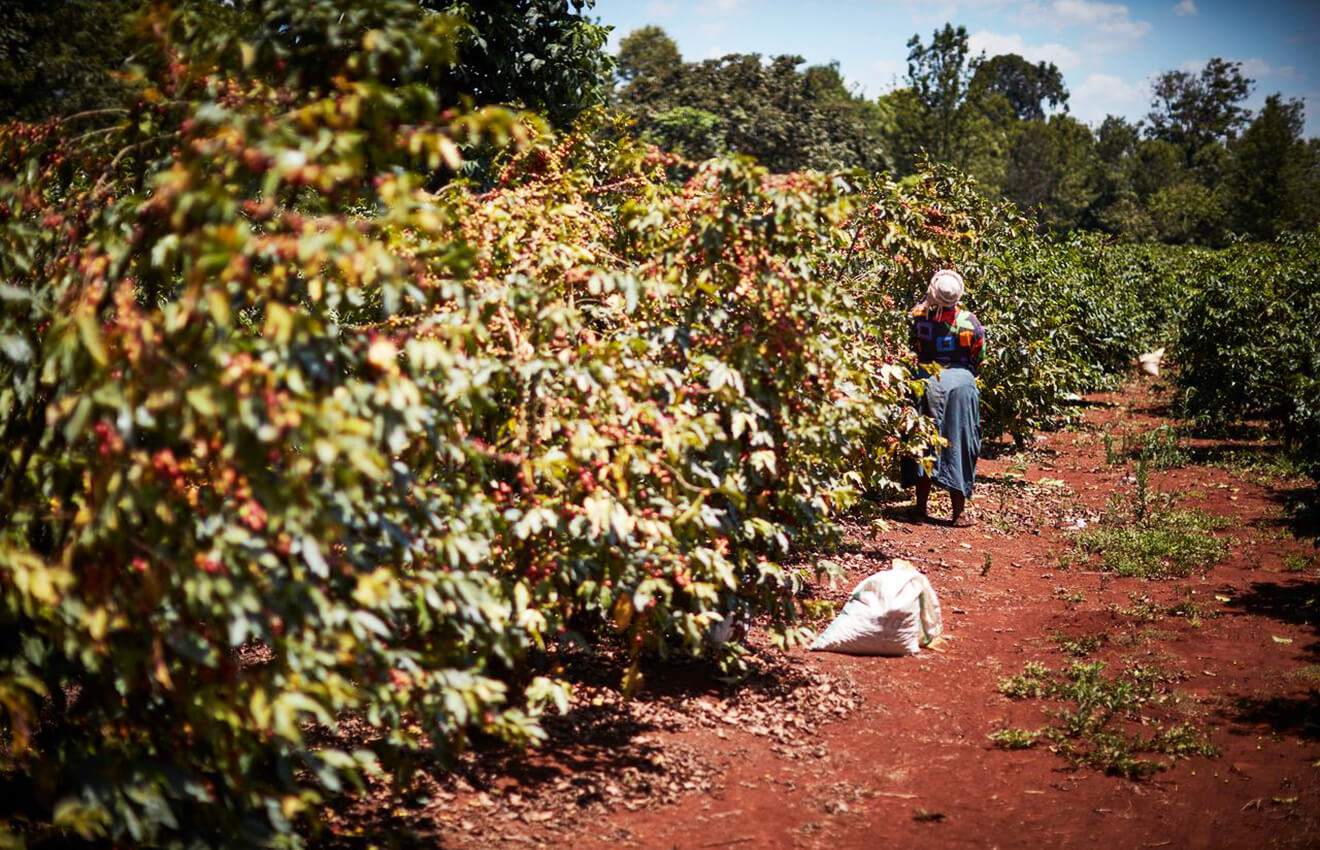
04 Jan From tree to sack – The journey of Kenyan beans
Our Kenyan beans come from the Kisson estate, located in Kiambu County in the Central highlands of Kenya. Kiambu is well-known for its coffee production and the prominence of coffee estates. The originfor the name of the Kisson Estate comes from the Hindi word Kisaan meaning farmer. The owner of the estate was given this nickname and decided to use it for the name of his coffee-producing land.
The coffee is grown throughout the region on healthy deep red volcanic soils at the foothills of the Aberdare ridge, high in nutrients and organic matter. This soil is ideal for coffee production and give the trees the necessary resources to allocate energy to high-quality coffee production. The region has gentle rain and a temperate climate, lending to the meaning behind Kiambu, or ‘place of drizzles’.
Harvest generally occurs between October and December. In some cases, early crop can be harvested between April and July. The coffee trees are carefully monitored and picking ensues only when the cherry is at the ideal level of ripeness. Picking occurs in the morning and buckets of bright red coffee cherries are carried to the mill. As the sun traverses across the sky into the afternoon, the cherries are piled high as underripe cherries and foreign objects are removed from the gleaming pile. The cherries are then poured into a hopper.From here, clean water is drawn upwards and directed into the hopper to cover the coffee cherries. This force pushes the cherries down a chute into the pulping house. The de-pulped coffee is then moved via the force of a water channel towards a fermentation tank. Along the way, floaters, or lower quality coffee beans, are removed to ensure only the highest quality continue along the process. The denser beans are funnelled through a hole where they land into a fermentation tank to rest for the evening.
